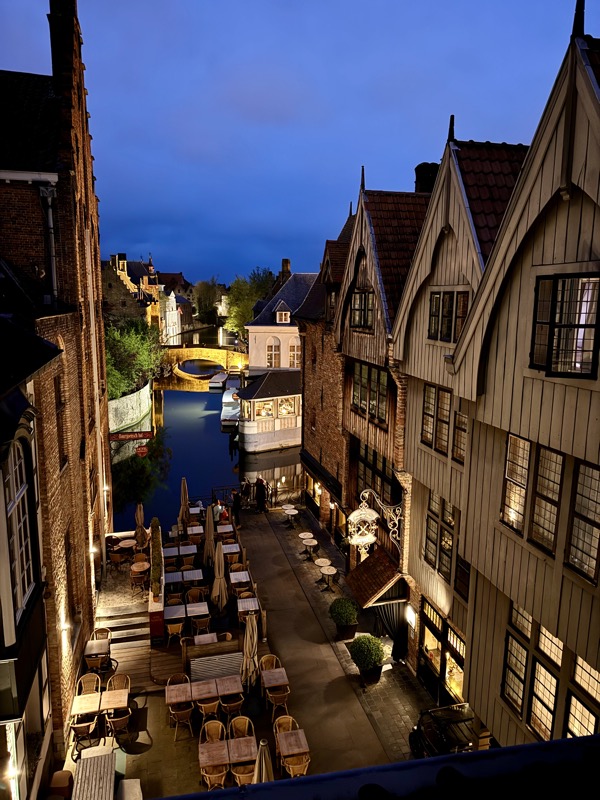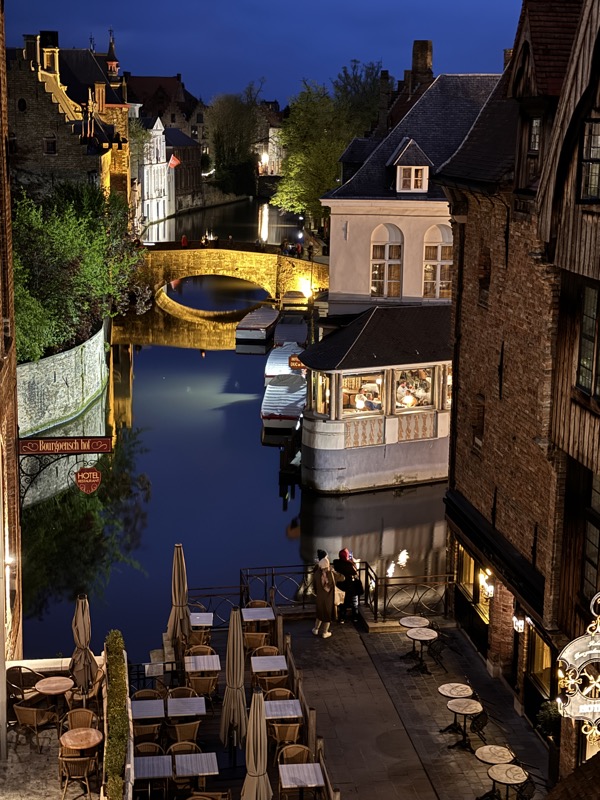Off to Brugge via Ghent today. We’re having our weekend early because Ramadan is over and we have work to do in Brussels and Zurich… which probably makes no sense to anyone.
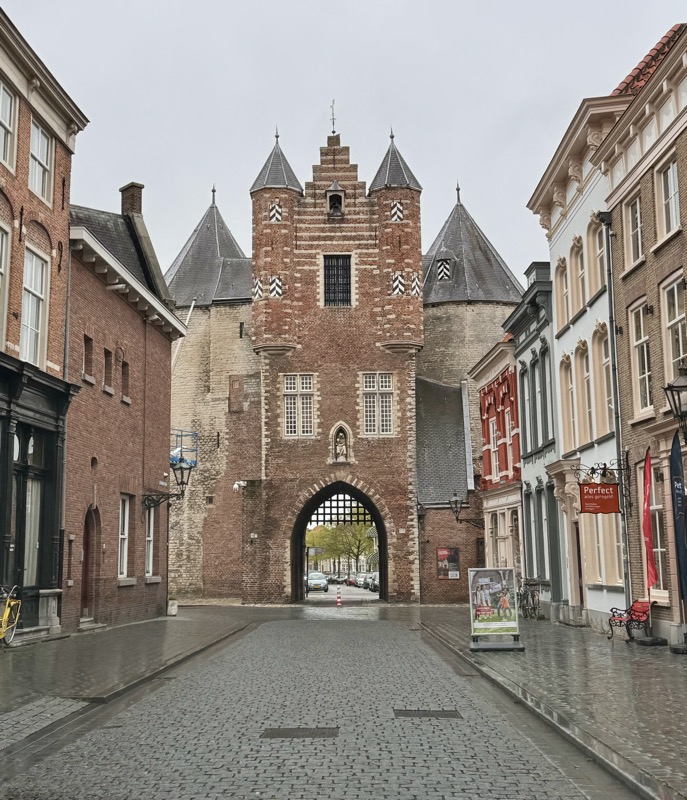
I’ll never get enough of European architectures. I met a man just now who asked me if I have seen the Bayeaux Tapestry – which I have not, though it seems like something I should have seen by now, and he said, ‘It really draws you into the whole history…’ and I was like, ‘Dude, I’m Australian, EVERYTHING here draws you into the history compared to back home.’
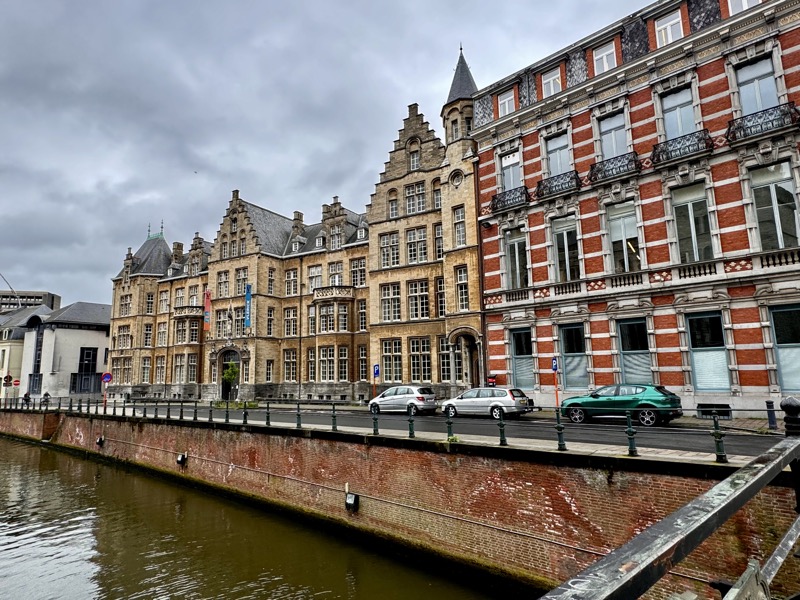
Totally apropos of nothing, that little green car is the Alfa Romeo Tomale we have hired for the week – it’s comfortable but also a bit fussy in a, ‘trying too hard’, kinda way.
Anyway, Ghent… we approached St Bavo’s Cathedral and the main square from the Jan van Eyck Square which is located behind the church and saw this impressive monument to Jan Van Eyck. Mr K was musing that he wants a huge memorial like this, showing him surrounded by a bevy of beauties with their boosies out after he’s gone… I said he had to do something worthy of being memorialised in such a manner, cos let’s face it – no matter how good you are at at it, there ain’t no way any fucking procurement expert is ever gonna be remembered like this! 😀

Ghent town square
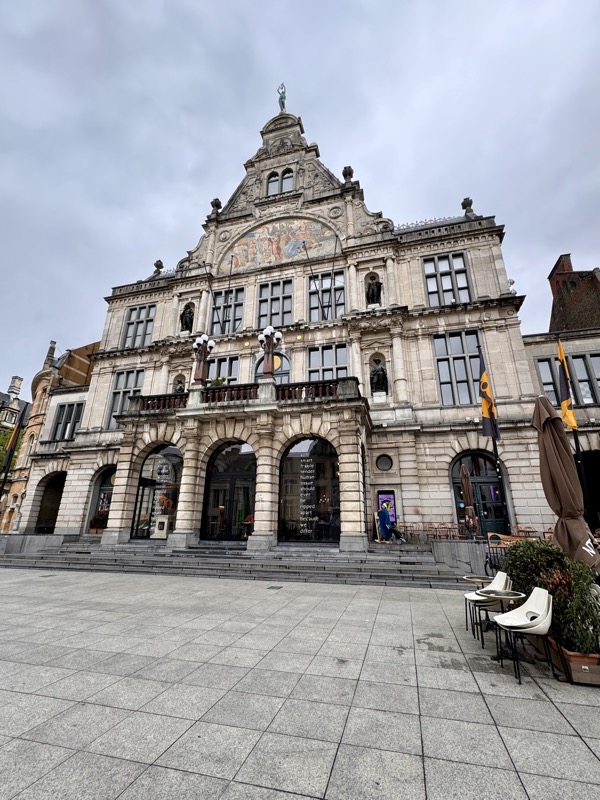
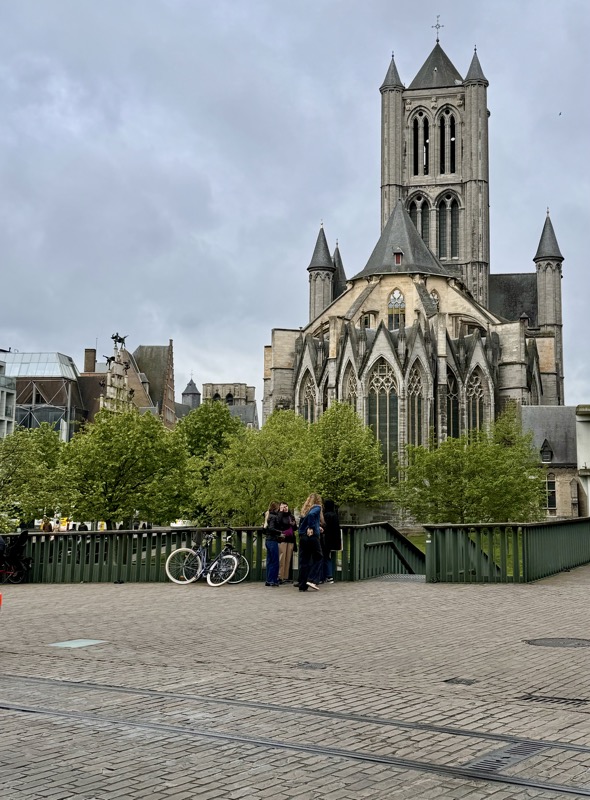

Saint Bavo’s Cathedral, also know as Sint Baafs, is a Catholic cathedral and the seat of the Diocese of Ghent since the 16thC, though it has been a religious site for centuries before that.

Just inside the vestibule to the church, was a large, very modern, very worrying ‘chandelier’? Interesting choice of lighting design for a space like this…
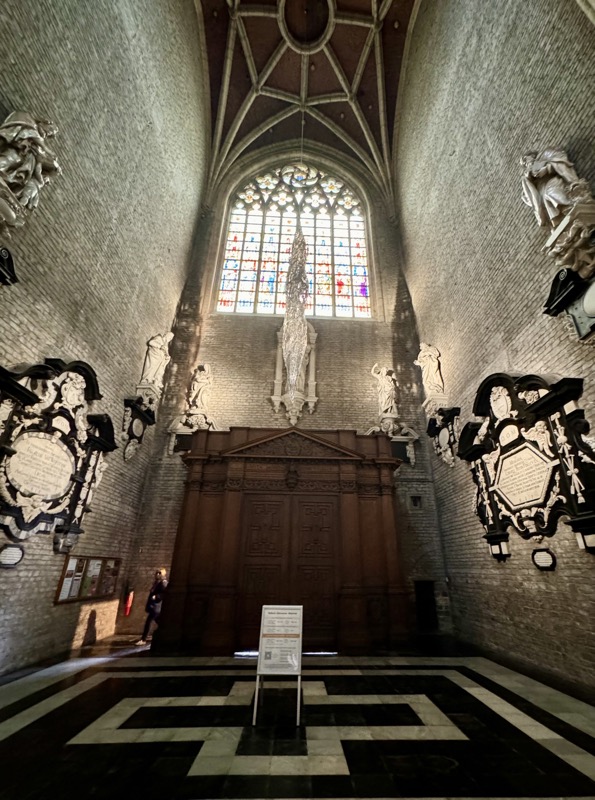
Originally this site housed a timber chapel for St. John the Baptist, built and consecrated in 942AD – I love that all this information has been passed down. The construction of the existing cathedral was started over that structure in 1274 and is in a Romanesque style that is still evident in the cathedral’s crypts. The vaulted high Gothic construction of the main hall of the church began around 1274, and the building was subsequently added to continuously through until the 14thC to 16thC with the additions of a choir, radiating chapels, transepts, nave aisles, the chapter house and a single tower on the western end of the Cathedral. The work is said to have been completed by 7th June, 1569… huge efforts over hundreds of years.
When the Ghent Diocese was founded in 1559, this church became its cathedral, however just prior to the completion of the building works, in the summer of 1566, it is recorded that Calvinist iconoclasts visited many Catholic Churches in the Netherlands (including this one) and smashed statues, shattered stained glass windows, destroy paintings and other artworks they deemed idolatrous. Thankfully at this time, the Van Eyck Altarpiece was saved… and it wouldn’t be the last time it needed to be saved from narcissistic fuckwits with cockeyed ideology.
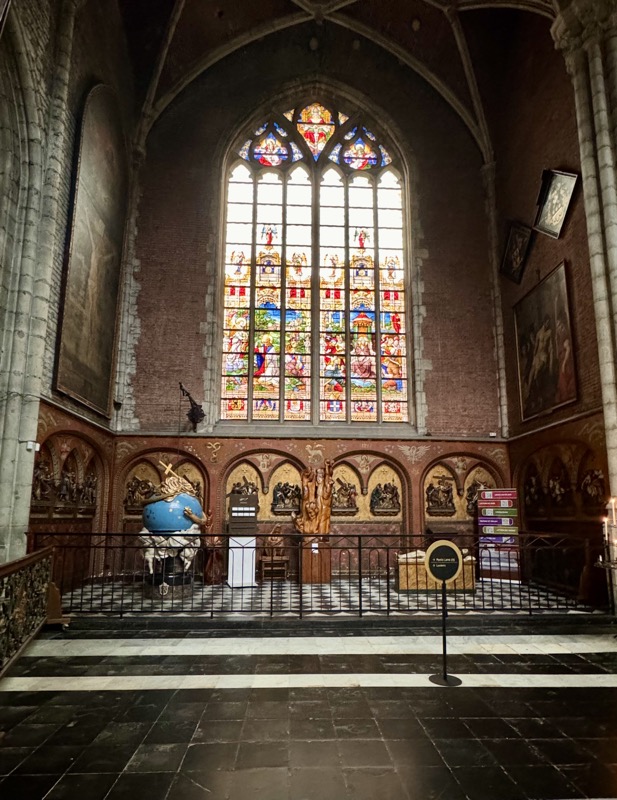
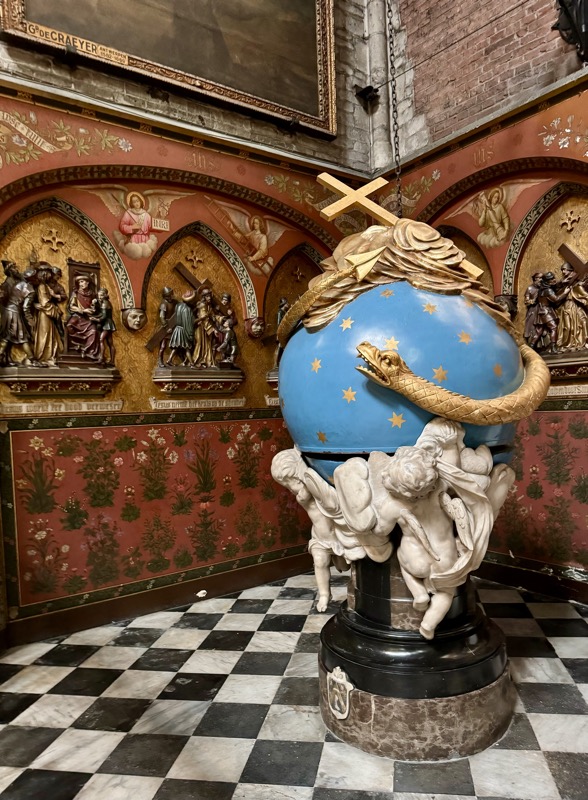
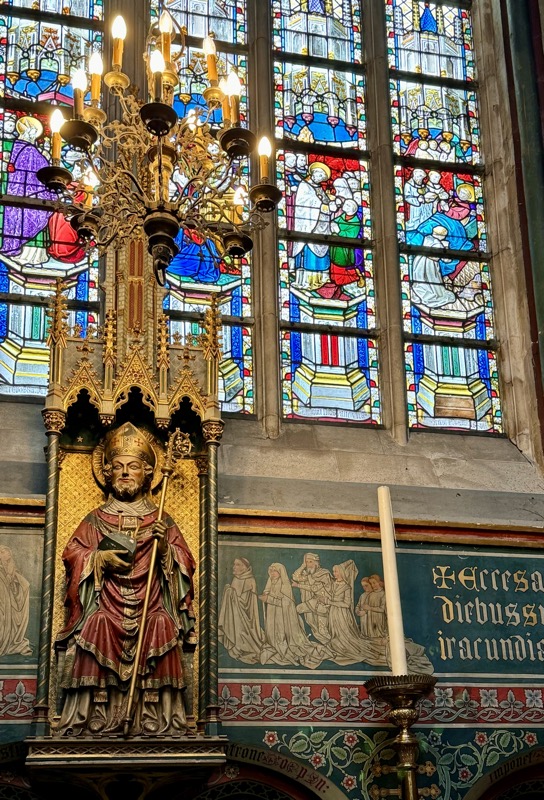

The impressive pulpit.
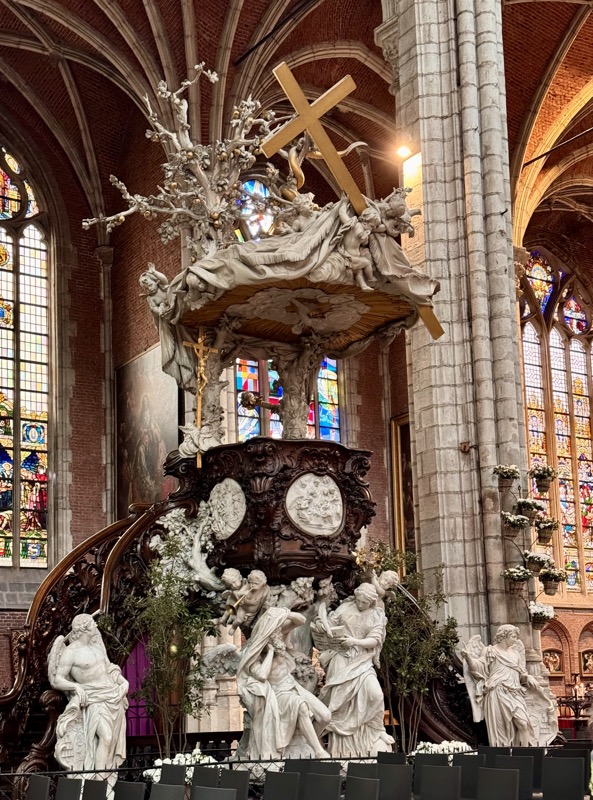
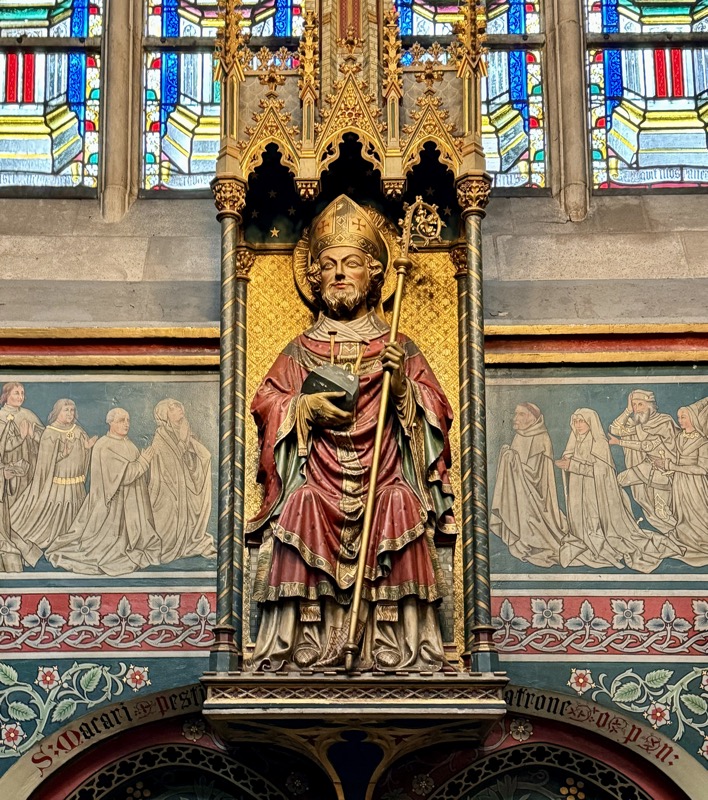
What is above is what is available to visit upon entry to the church, however, to see the crypts and the famous Ghent Altarpiece, you need to buy tickets online to enter what is ostensibly an museum inside the church. Now, given the exorbitant amounts it must cost to upkeep and secure these elaborate and important buildings and their historical artefacts, I don’t really mind paying my €16 per adult to gain access to see them, but for some reason a lot of these historical sites seem to want to *value add* these days and man do they miss the fucking mark!
You enter the church amid signs asking for silence a respect to be shown in this place of worship, (as is standard in every single important religious site in the entire world, regardless of the local variant of omnipotent invisible friend being worshipped!), only to be ushered into the crypt and given a VR headset with a loud and blaring soundtrack with heaps of church bells, a gratingly brash American accented narration (on the English setting at least), and a whole pile of glowing cauldrons, crosses, footprints to stand on, holographic models of the town of Ghent and it was just… fuck, no! What the ever loving hell are they doing? If I wanted to see some crass, seppo, bastardisation of history, I could have just stayed at home and switched on the History Channel with it’s over-sensationalised and over-dramatised presentations. I lasted less than five minutes into the one hour virtual tour, before ripping the headset off in disgust and choosing to just see the crypts for what they are… it left me seriously concerned for what I might expect upstairs at the Altarpiece. :/
Here is the info of the VR Tour for anyone who is interested, engage with it at your own risk: https://www.sintbaafskathedraal.be/en/ghent-altarpiece-ar-tour
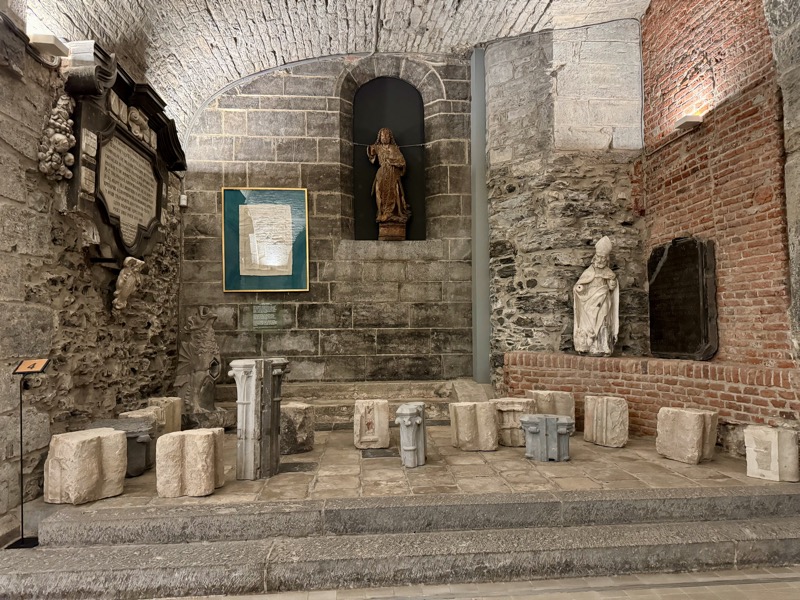
The downside of not sticking with the all hype, no substance VR tour is that there was not a single fucking information plaque down here – just glowing footprints that auto start another onslaught of imagery and shitty narration that put your teeth on edge.
I believe – that the fresco paintings here are c.12thC, but don’t quote me on that. No plaques.
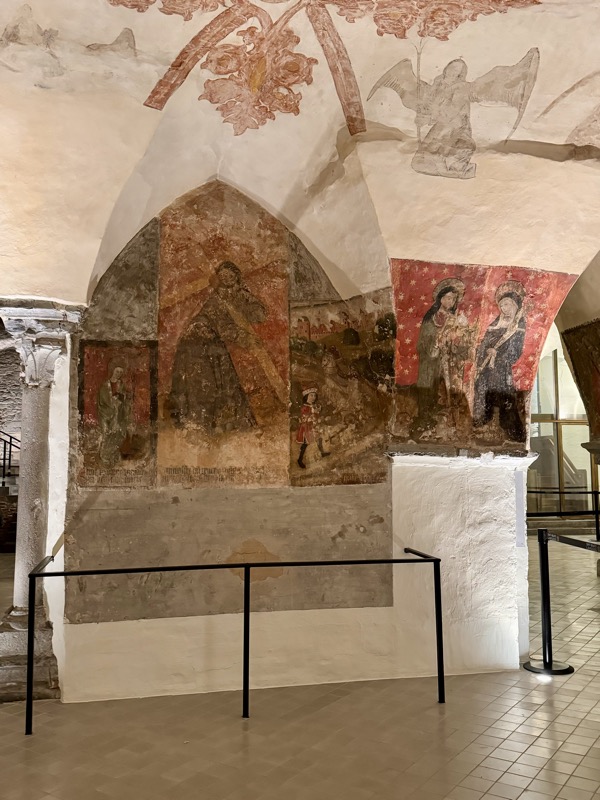

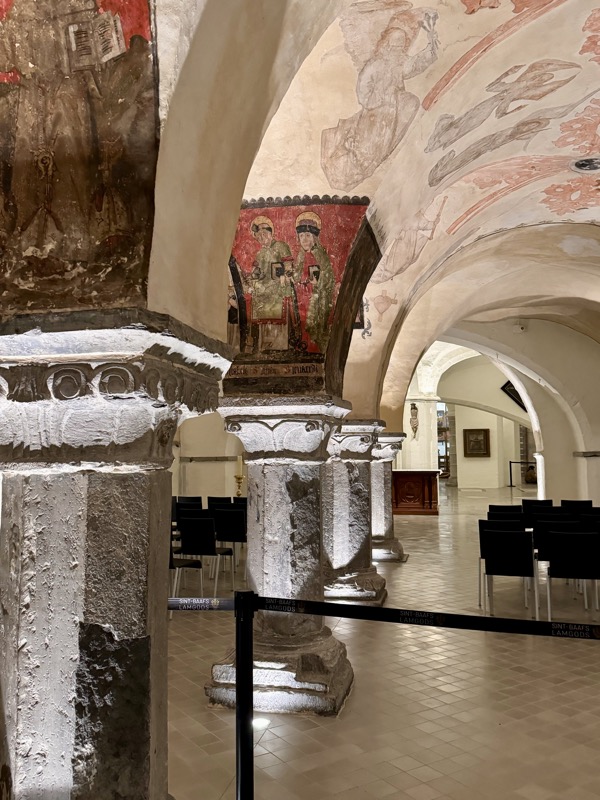
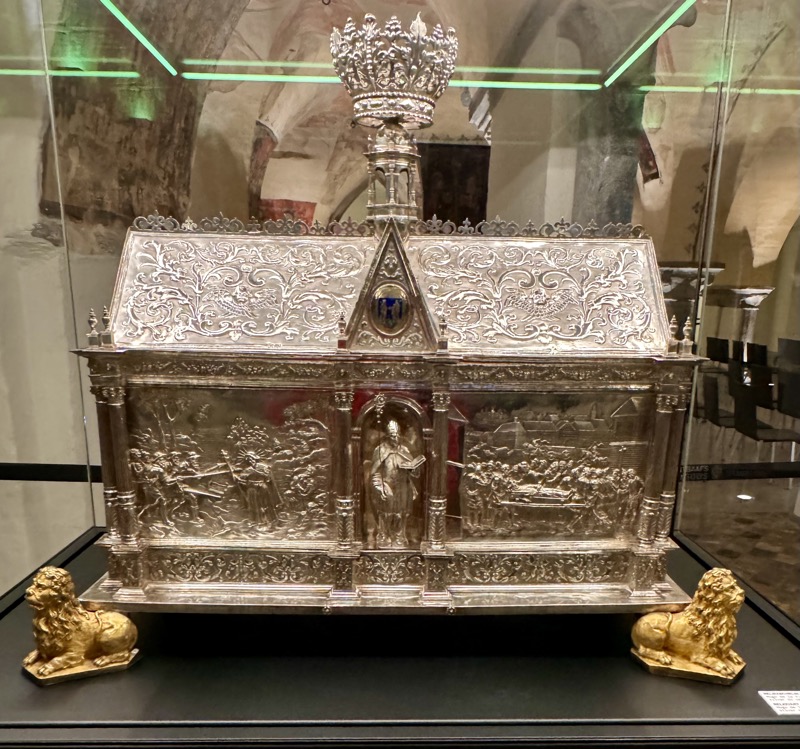
Above: A reliquary to Saint Macarius (whose connection to Ghent I have been unable to ascertain), and,
Below: A very recognisable reliquary of head of Saint John the Baptist. Both 17thC, neither attributed to artists.
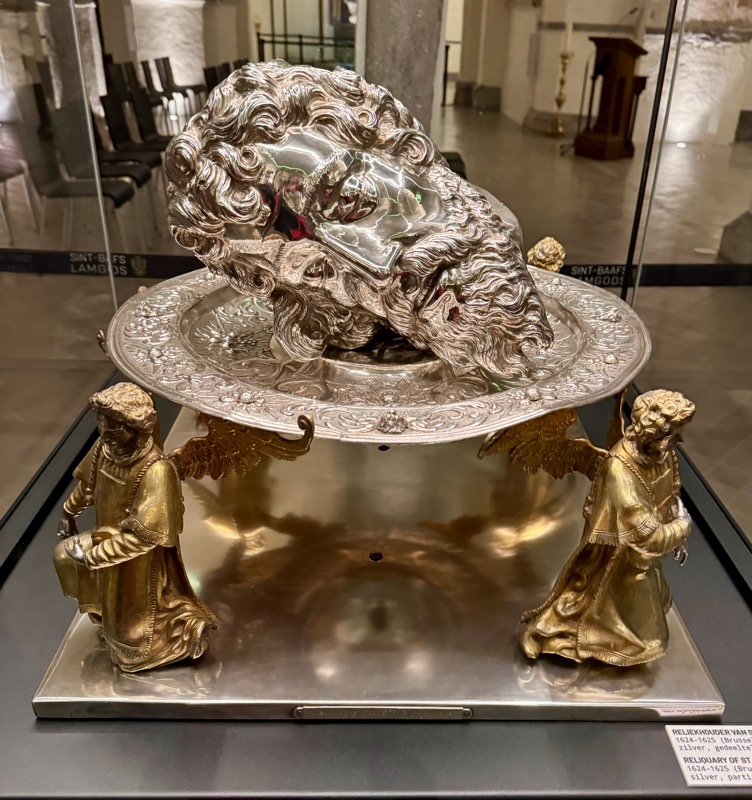
The ‘History of Saint Andrew’ painted in 14 panels by Frans Pourbus the Elder in 1572…
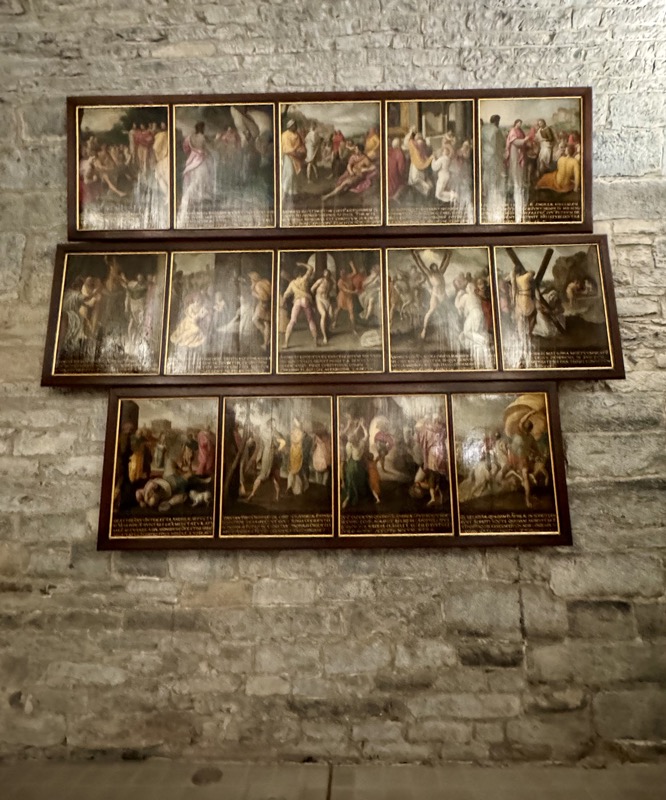
Heading
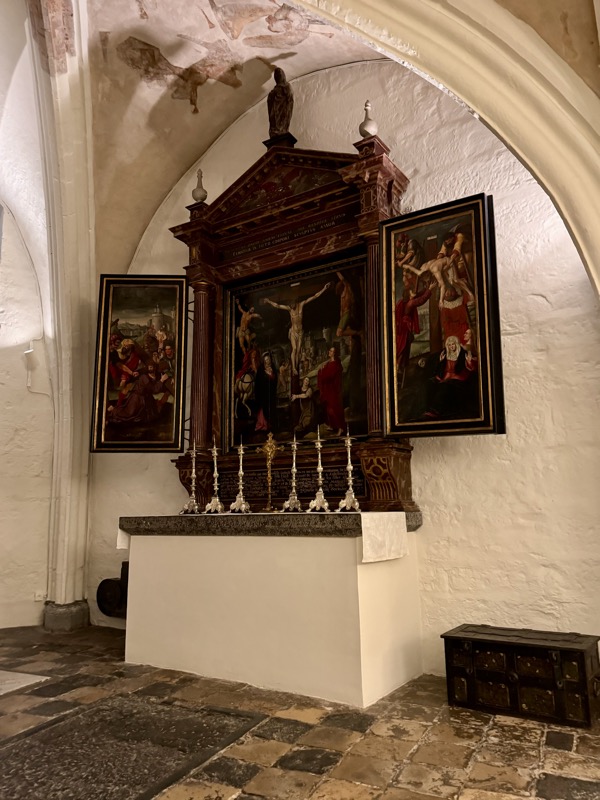
Leaving the crypts, we head up a few levels to the ambulatory chapels which are elevated and behind the main nave of the cathedral. The ceremonial tomb of Bishop Anton Triest, in dramatic black and white marble, sculpted by Jerome Duquesnoy.
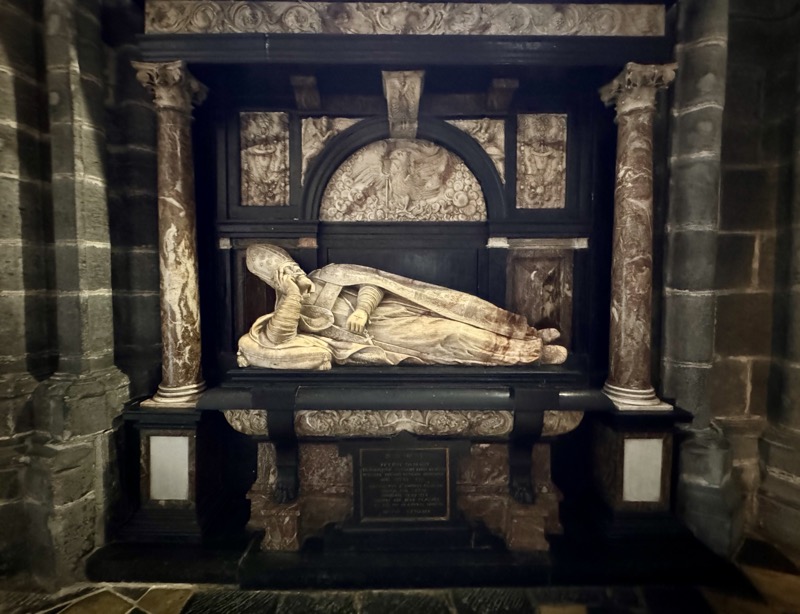
The Rubens Chapel, so named because it contains a most important masterpiece of the Baroque artist, Pieter Paul Rubens, completed in 1624.
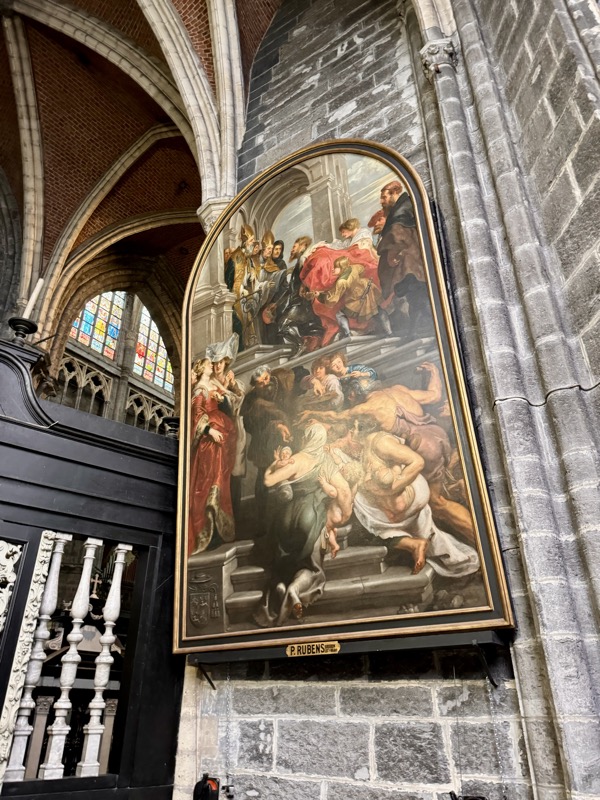
The ambulatory pathway between the various chapels…
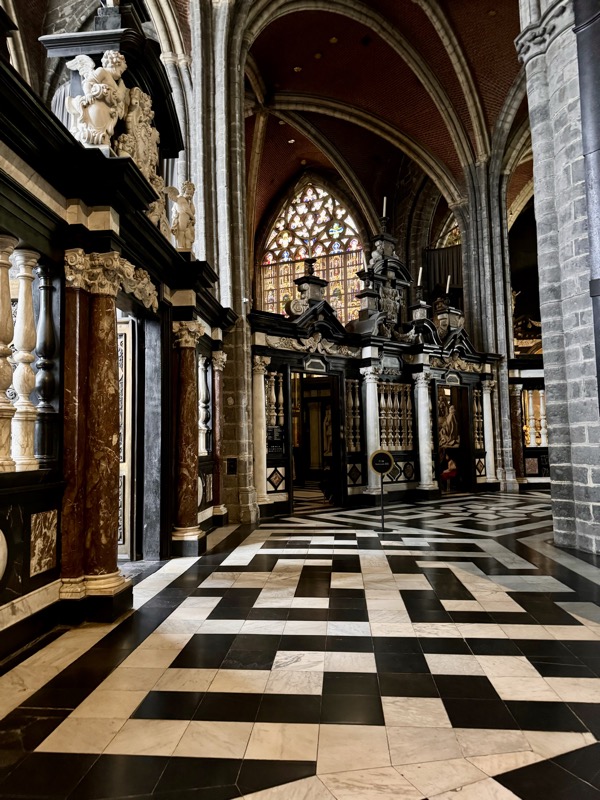
Ooh… one of the ambulatory chapels was filled with modern art – I have just gotten over the trauma of the VR headsets, please, no… the Altarpiece is around here somewhere.
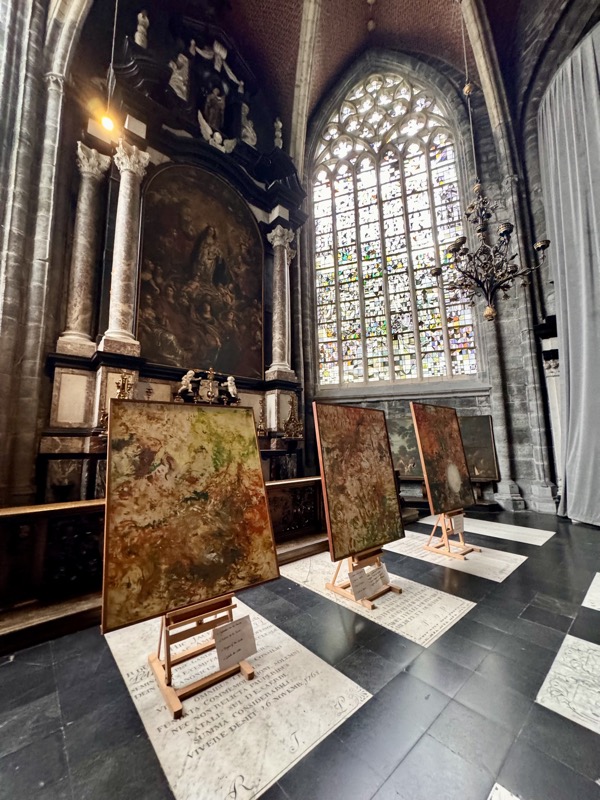
Originally the Ghent Altarpiece, which is formally known as the, ‘Adoration of the Mystic Lamb’ but here everywhere is referred to as the, ‘Son of Lamb’, was installed in the Joost Vidj Capel on the eastern side of the ambulatory chapels. Now it is housed in the ‘Chapel of the Blessed Sacrament’, all to itself. The work itself was originally started by Hubert van Eyck, but was completed by his brother, Jan van Eyck, after Hubert died. The painting is considered to be Van Eyck’s masterpiece and is one of the most important works of the Northern Renaissance – being an exemplar of the transition between paintings of the Middle Ages and the Renaissance. This enormous artwork was undertaken in 1420 and completed by 1432, and has such a storied history.
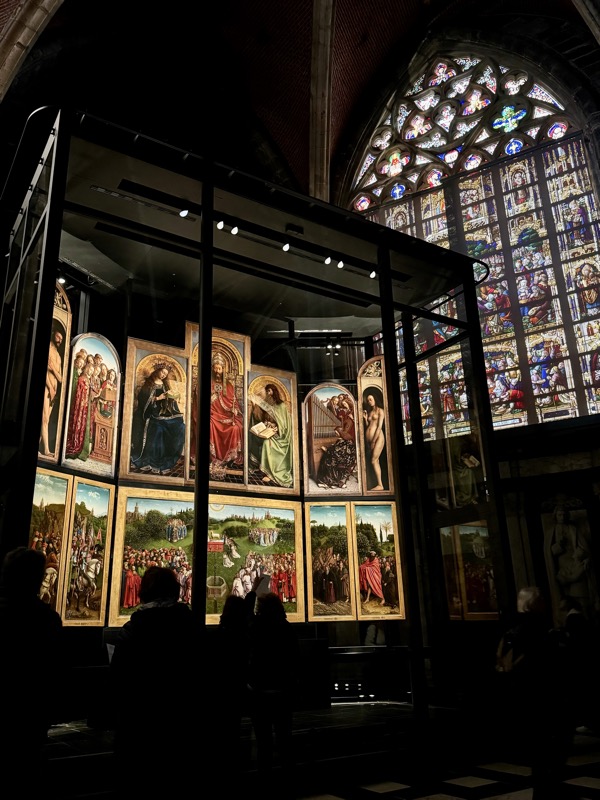
Incredible…
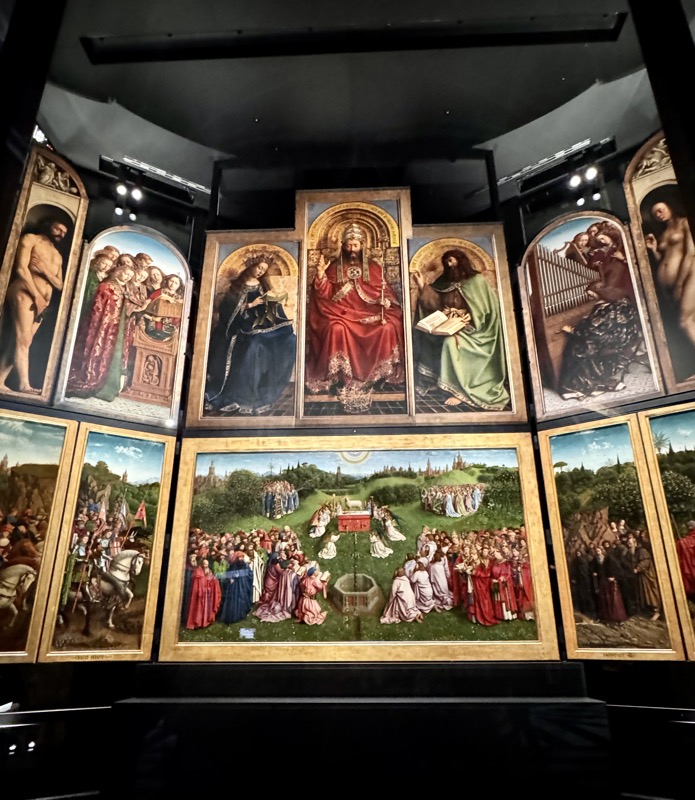

Over 500 year old and so vibrant and detailed…

One part of the painting, the lower left panel, which is known as, ‘The Just Judges’ was stolen in 1934 and has never been recovered. It is believed to have been lost years ago, and possibly even destroyed. A copy of the ‘Just Judges’, completed done by Jef Van der Veken, now sits in its place. Would be very cool if it turned up one day in some dead rich guy’s private art collection or something.
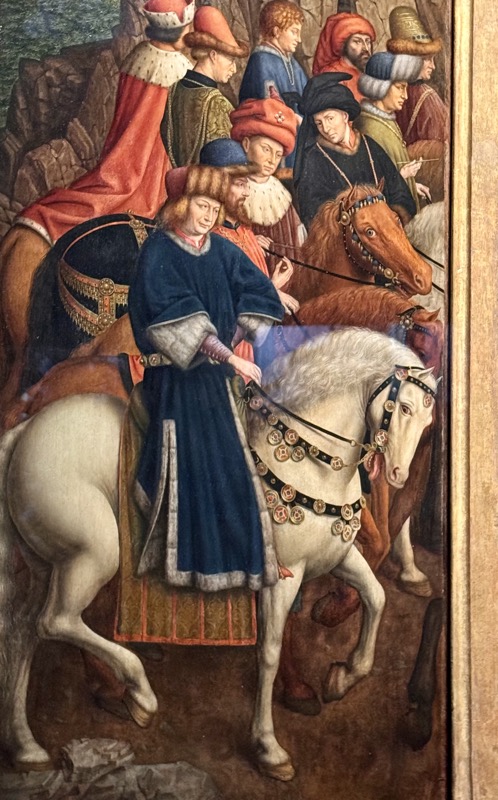
The Adoration of the lamby-lamby ding dong…
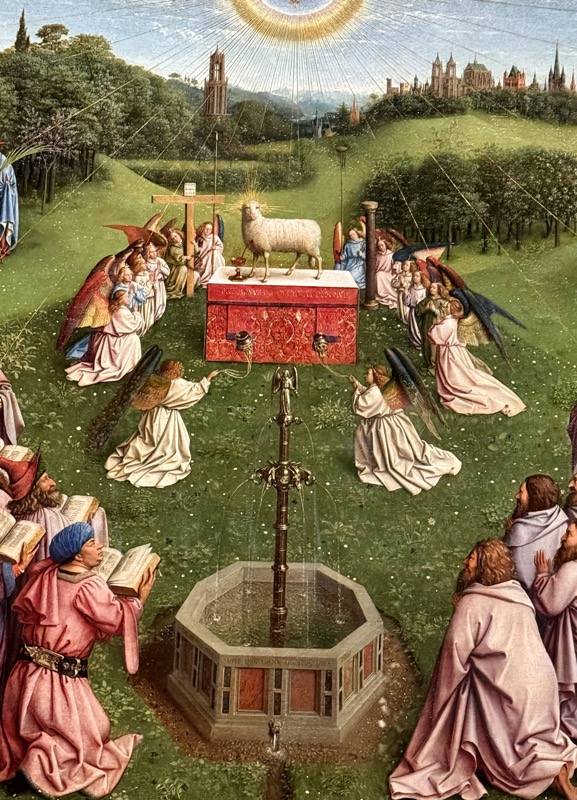
I’ve always enjoyed how the rays of sunlight are rendered in this painting… the lines draw the eye around the art work and keep you looking, and finding, more detail. The overall design of the work is believed to have been drafted by Hubert van Eyck, but most of the work executed by Jan van Eyck, who refers to himself repeatedly around this work, ‘as the second in art’ to his brother.
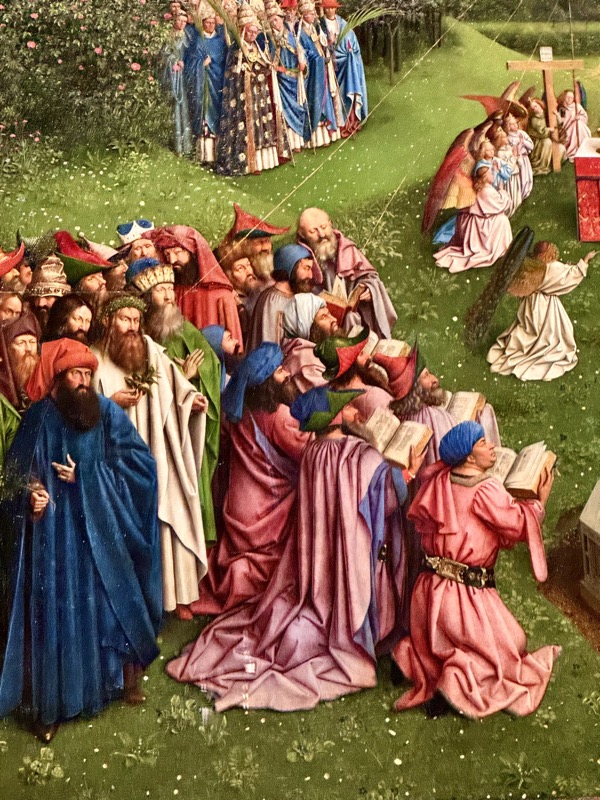
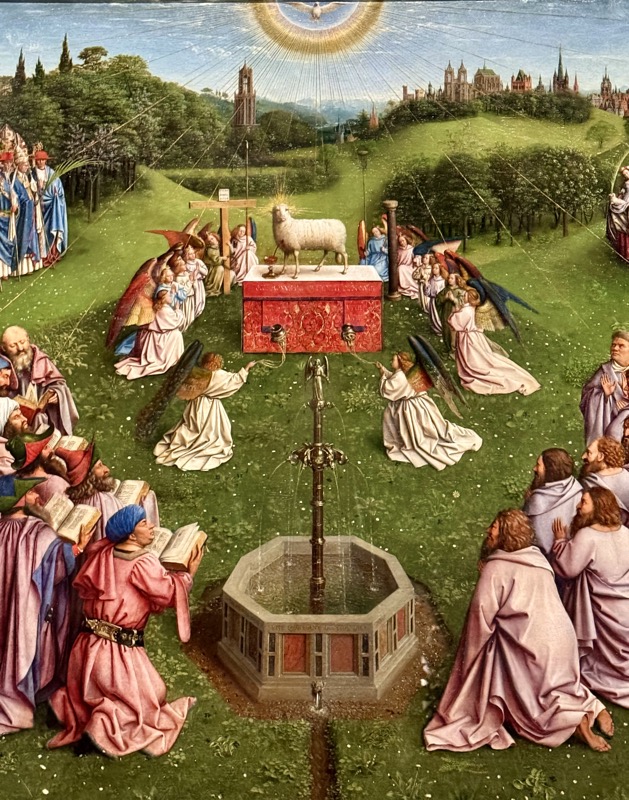
Fecund Eve… just to remind us of the Sin.
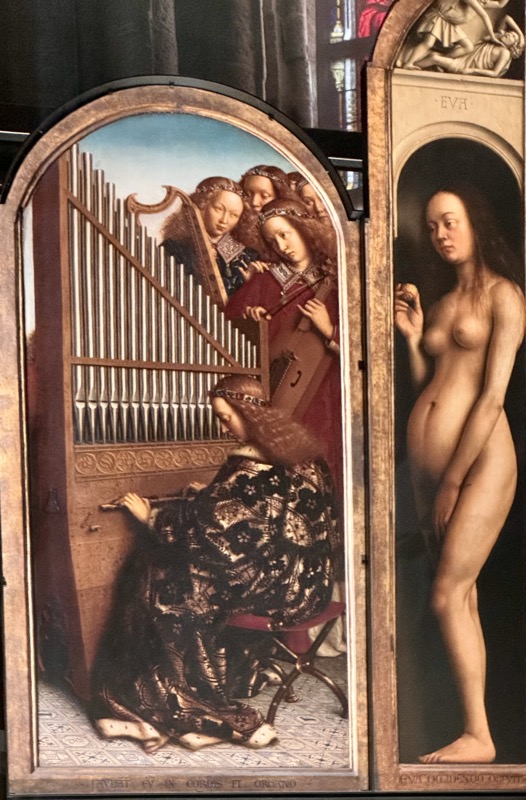
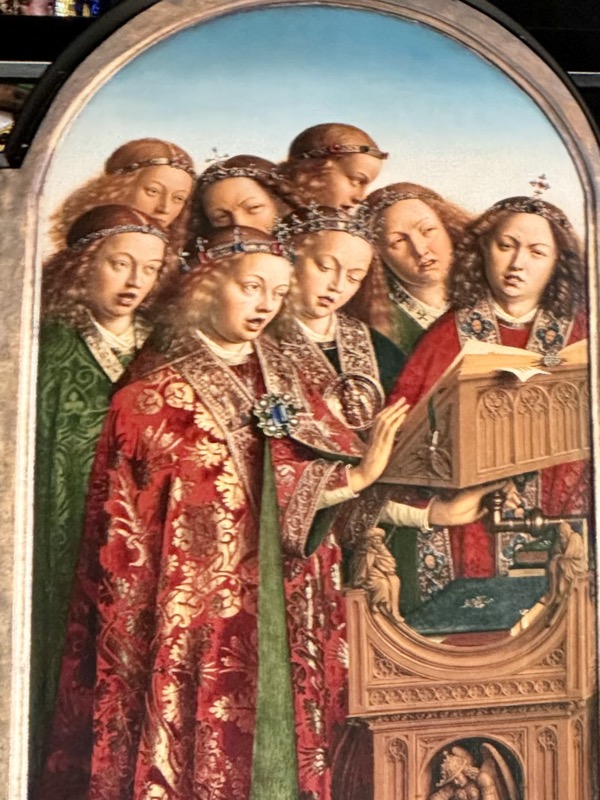
It is even possible to see the back of the altarpiece – or rather the front as it would appear if it were closed:
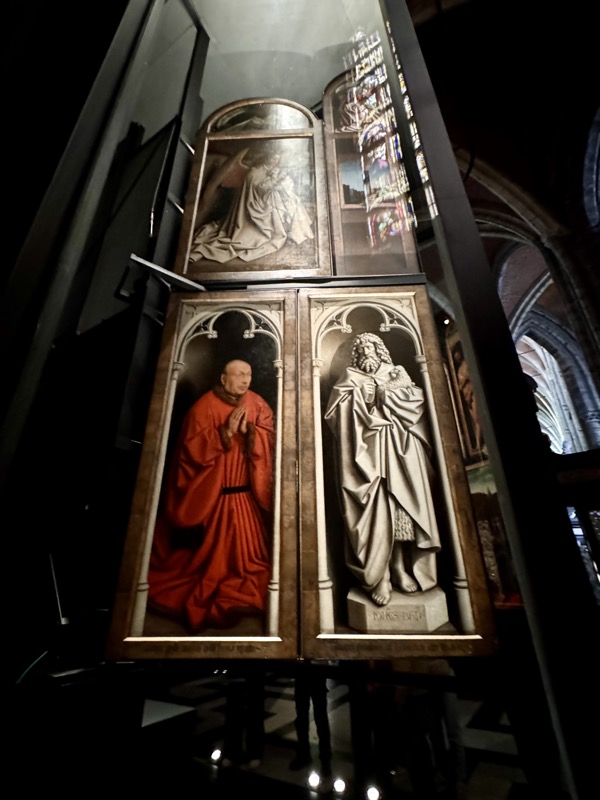
It looks like this when closed properly, but very hard to make out in the darkened chapel:

It truly is a stunning piece. I also feel so fortunate to be seeing it, not just in this chapel where it belongs, but at all. With its turbulent history of having been stolen by Nazis and stored in a salt mine in Austria until it was found at the end of the war by American soldiers, and then returned to Ghent by Eisenhower… it’s perhaps just blind luck that it wasn’t lost forever.
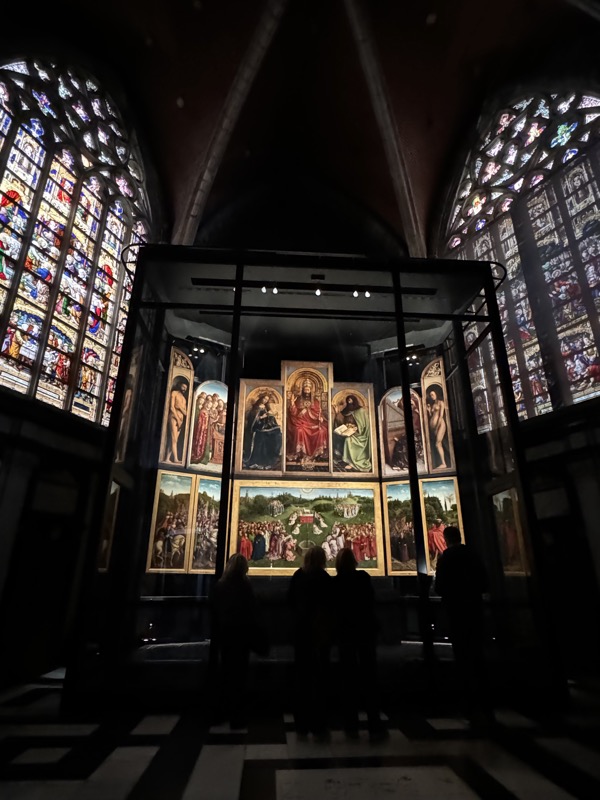
In another of the ambulatory chapels, called the Priests and Bishops chapel which had confessionals lining the walls for the sinners… were these two peculiar caskets. Unfortunately, there was no information on them. They look somewhat like reliquary caskets, but those almost always contain information on what/who was supposed to be contained within. The work on these was absolutely stunning! I’m thinking 16thC embroidery but they could be far more modern, it’s hard to tell.
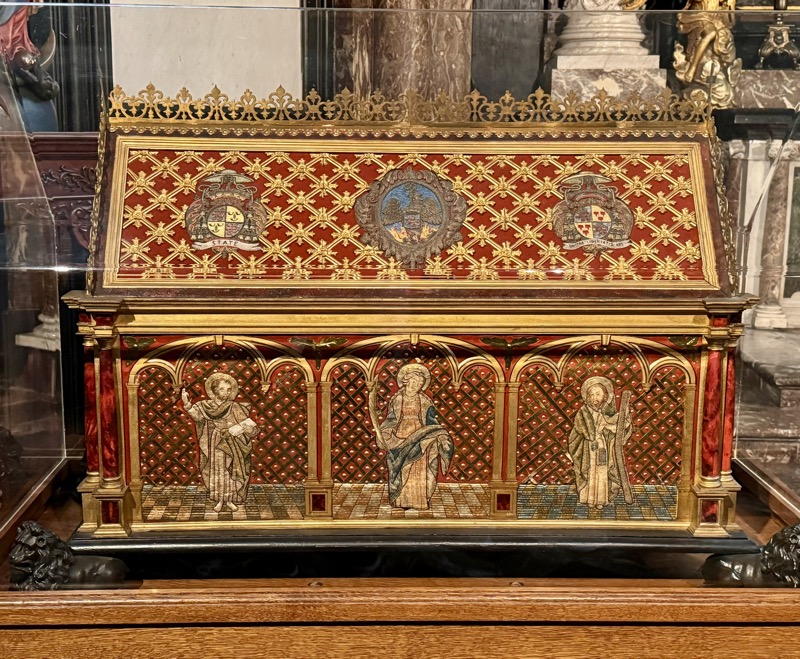
Metal strap work surrounding the embroidered motifs:
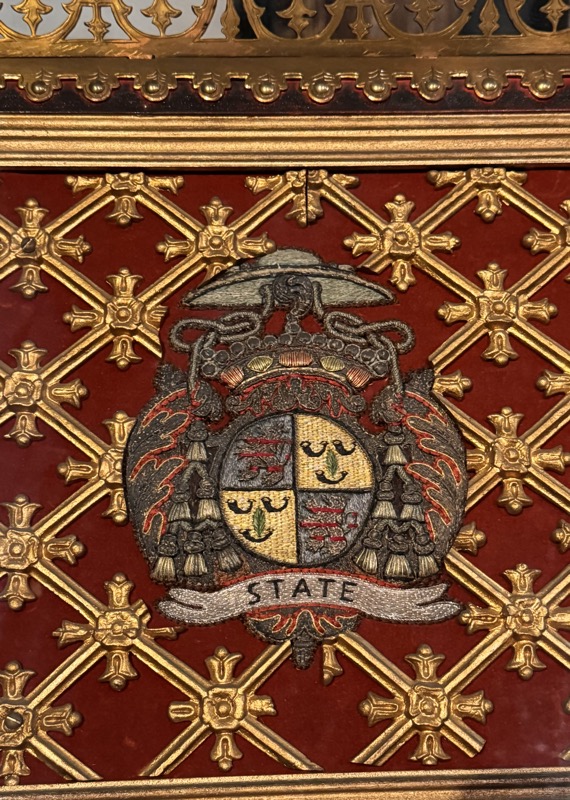
Beautifully executed – I know how much work it takes to create figurative pieces in this style.
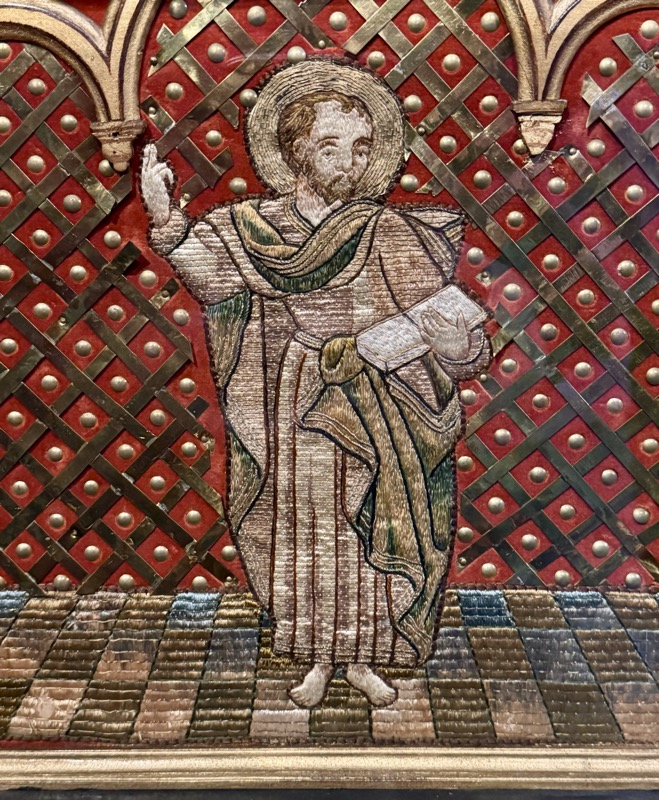

The second chest has more goldwork techniques worked in more floral designs without the gold metal strapwork as a background…
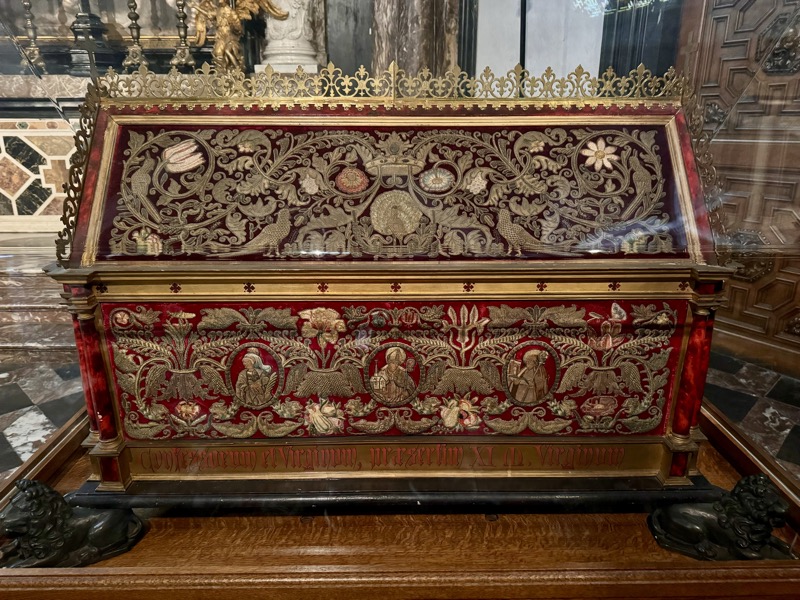
Padded and heavily couched goldwork…
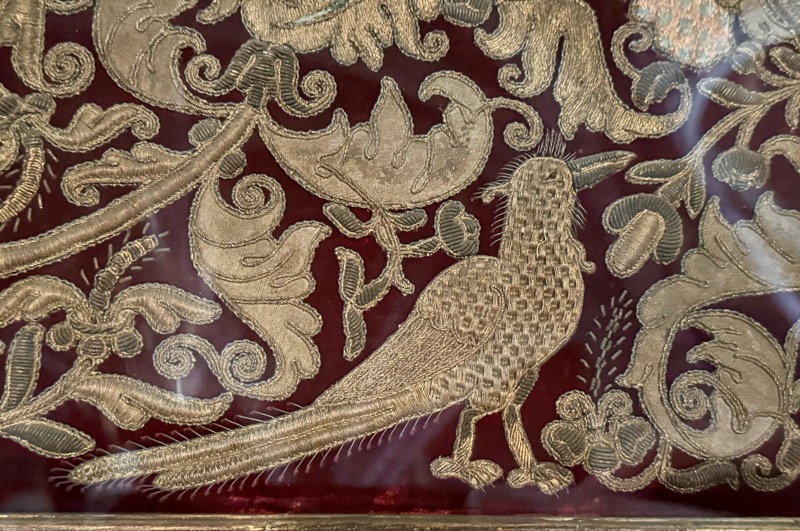
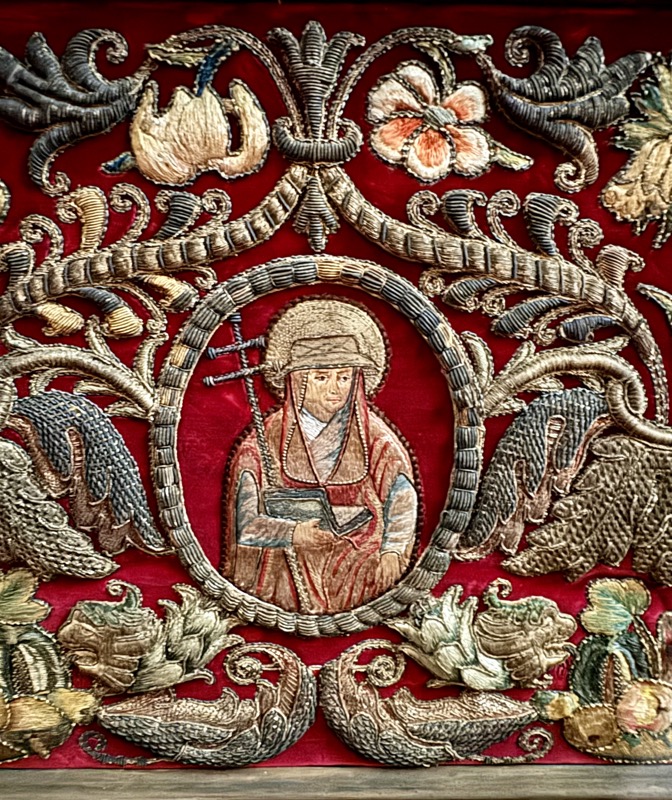
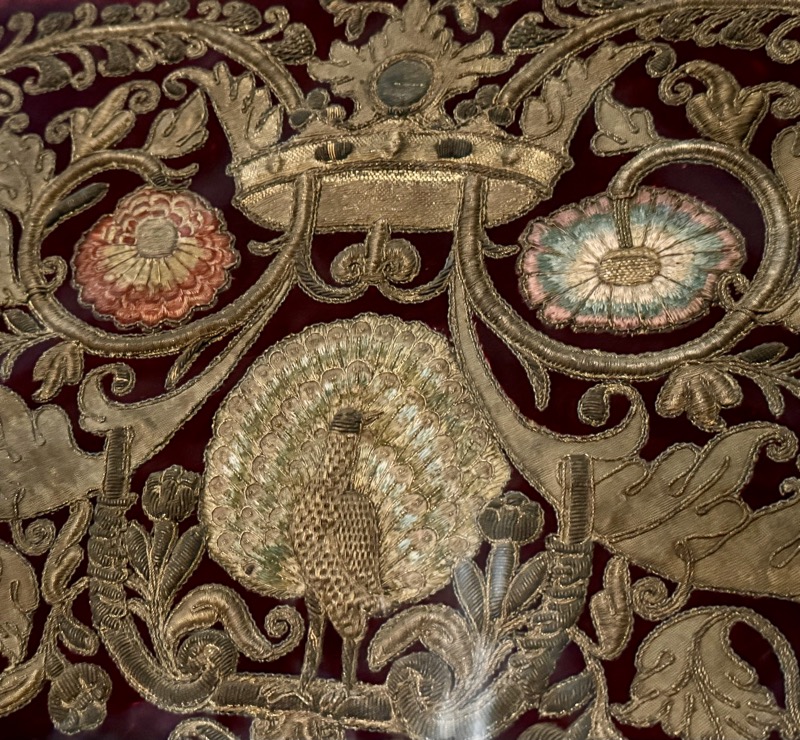
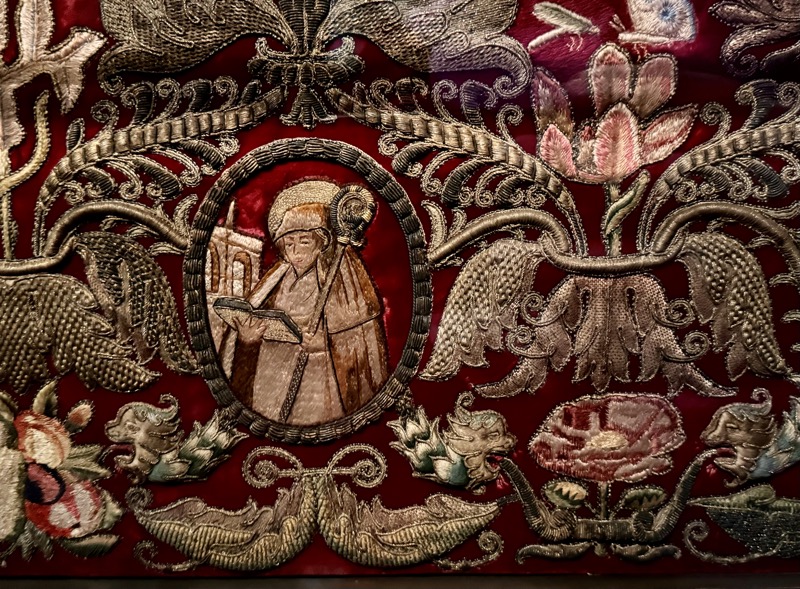
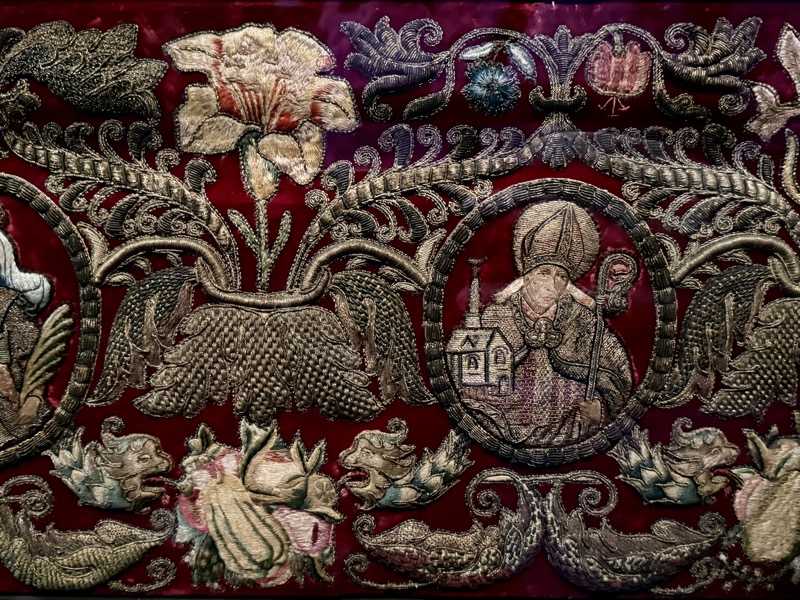
The main nave at the top of the cathedral… so much beautiful stained glass. Many panels of the glasswork in the lower part of the chapel appear to have been replaced with modern glass, but in this old section of the church, they appear to be original… thank goodness Hitler was an art lover and tried not to destroy all these amazing buildings.
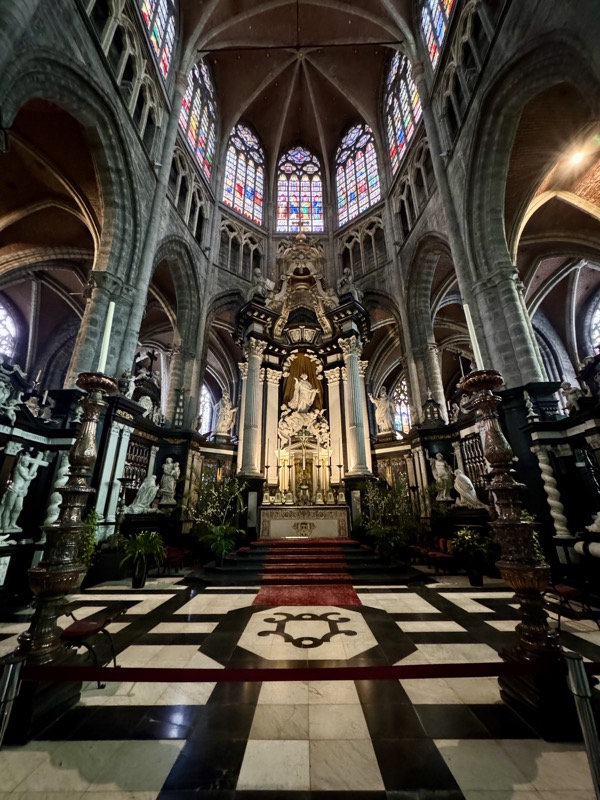
From the back of the nave looking towards the main entrance of the cathedral.
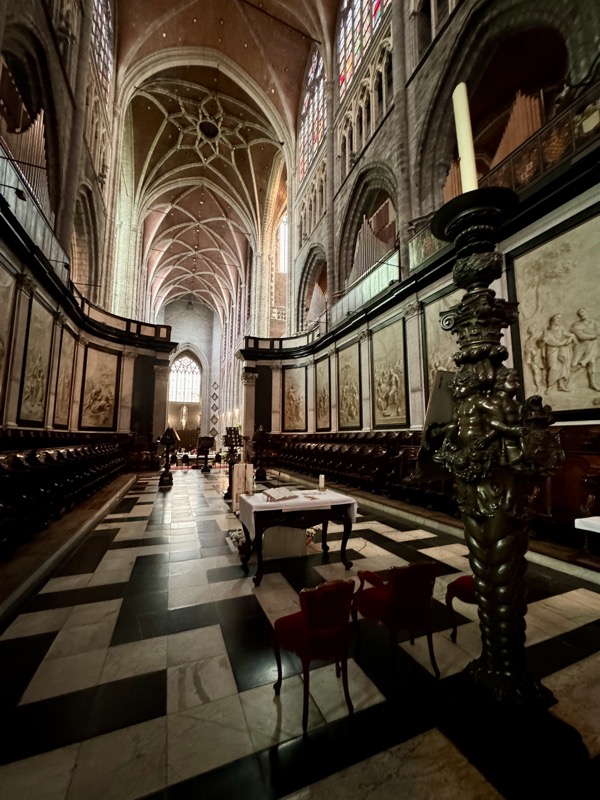
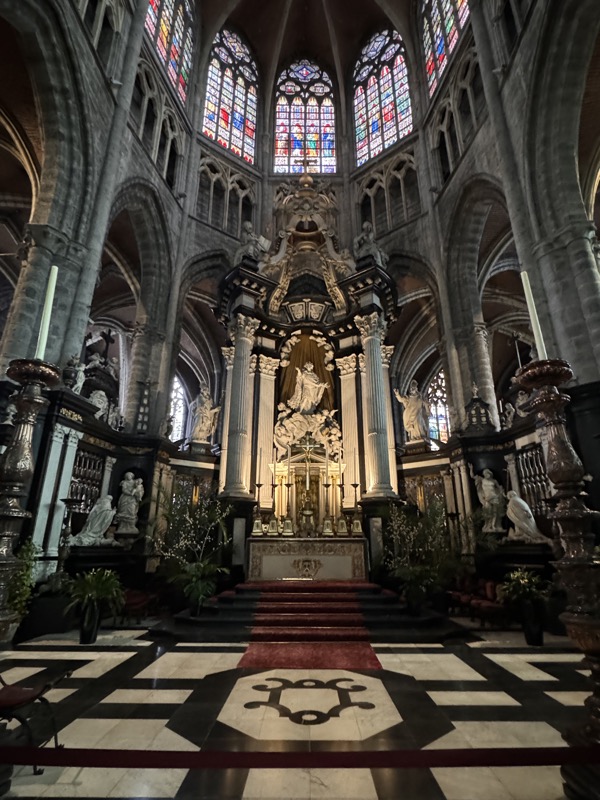

Back out in the square, the Ghent Belfry dominates the townscape – now a tourist information centre. It was a fairly cold and miserable day, not as windy as out at Volendam thankfully, but we beat a hasty retreat to a local cafe for a hearty lunch with the intention of skipping dinner this evening.
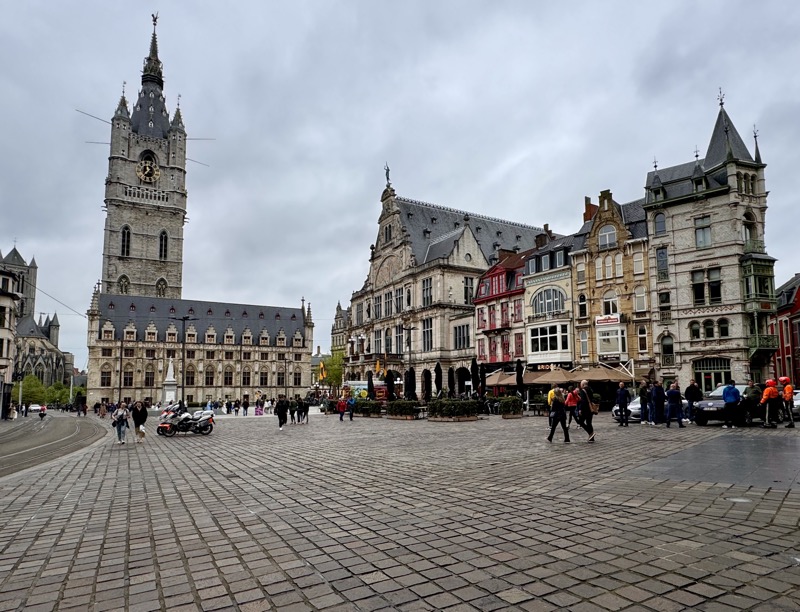
I tried the onglet with champignons, Mr K ordered the Ghent boeuf stew – both of which were excellent and our meal came with some frites and mayo, of course.
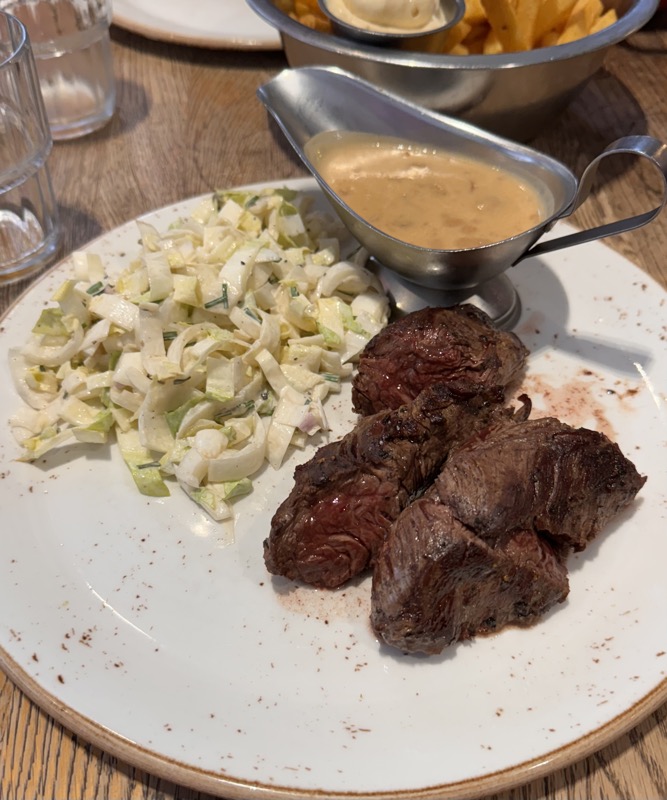
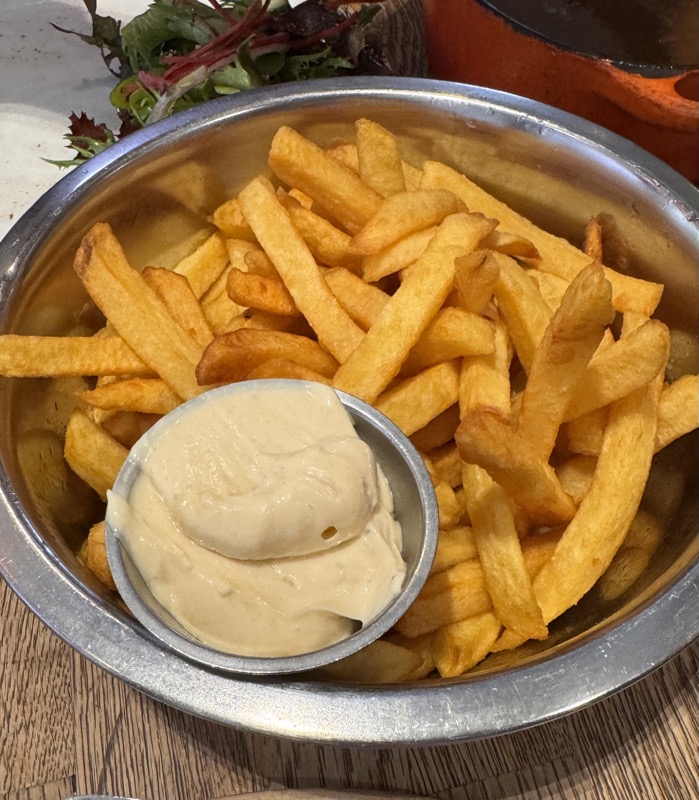
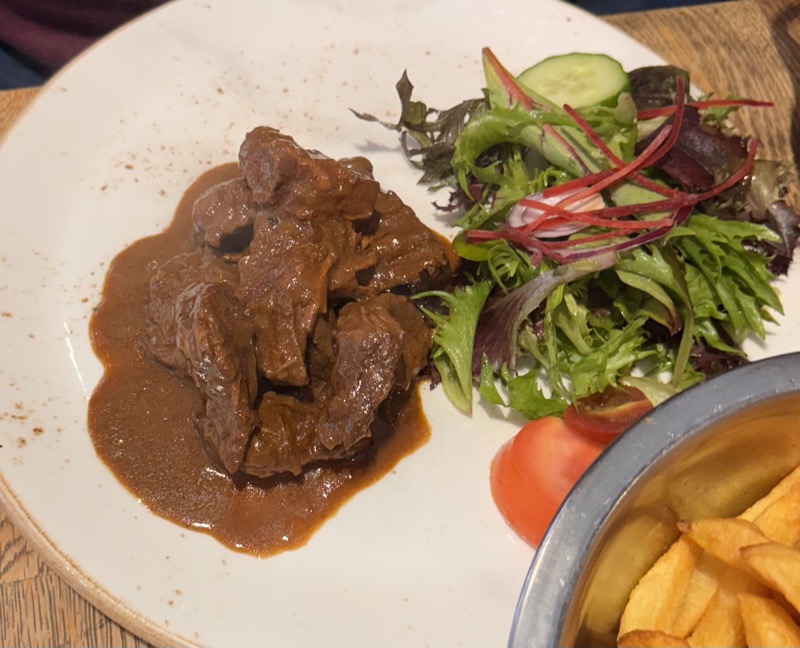
Farewell to Ghent for now, we may have to pass back through on our way to Brussells. We are spending this evening In Brugge… you know, of ‘You can’t give ketamine to a dwarf!’, fame.
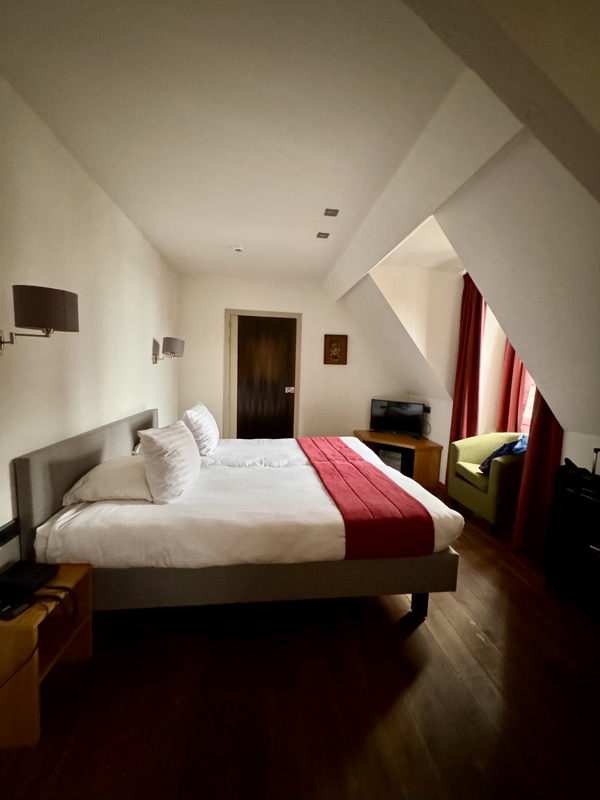
I had booked us a canal view room in the Hotel Bourgoensch Hof, and the view from our window did not disappoint… the building on the right at the edge of the canal is the one that poor Colin Farrell had to jump out of six times when filming, ‘In Bruge’, here.
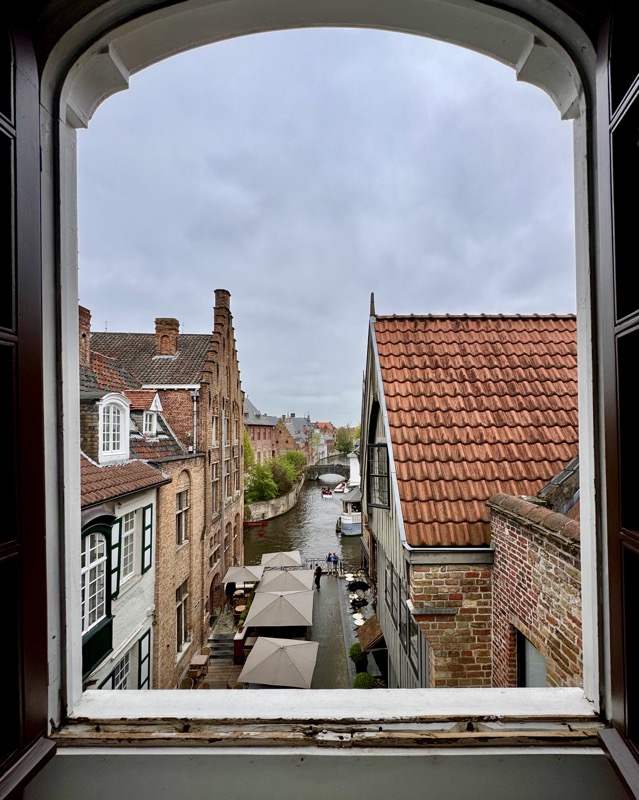
The view was even prettier as the sun went down… there is a saxophonist playing out there somewhere and the indistinct chatter of people enjoying an evening aperitif, and the smell of freshly baked waffles drifting up to our room on the third floor.
